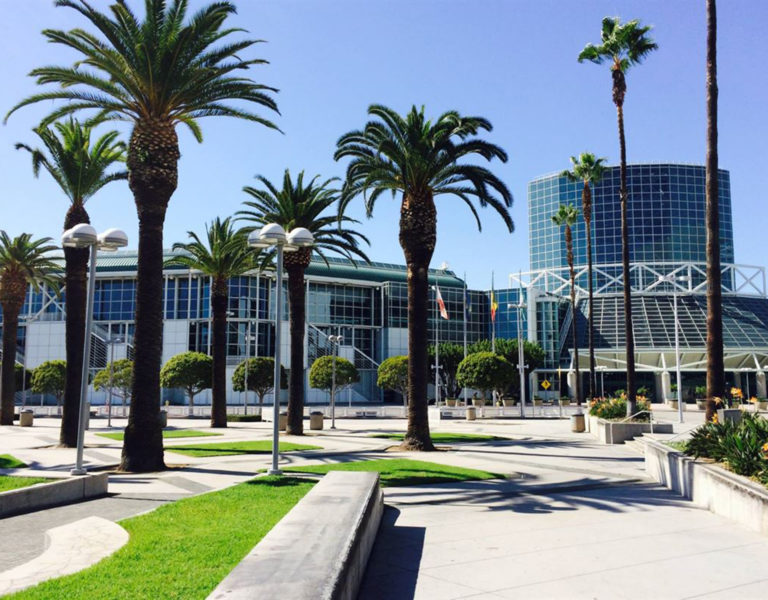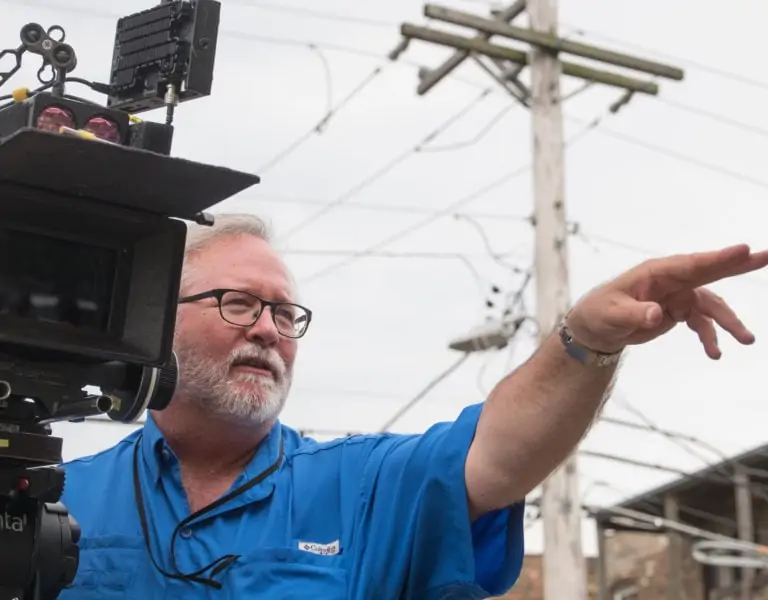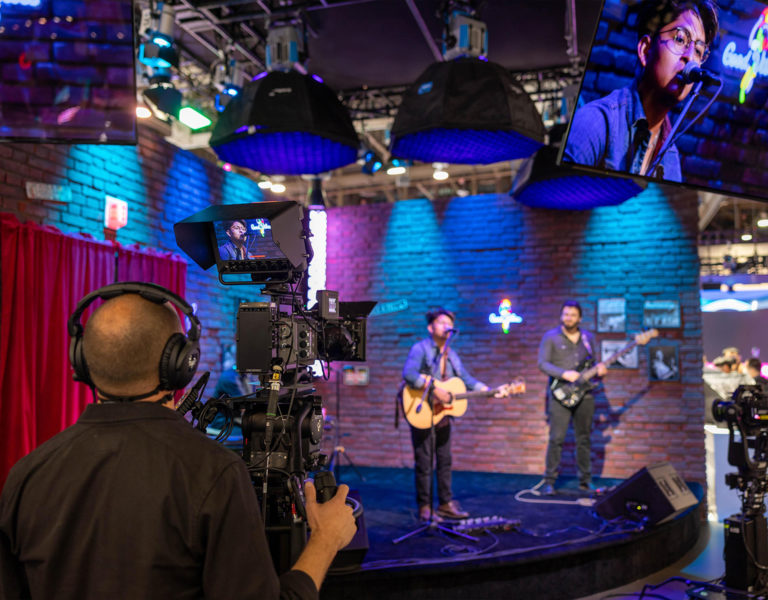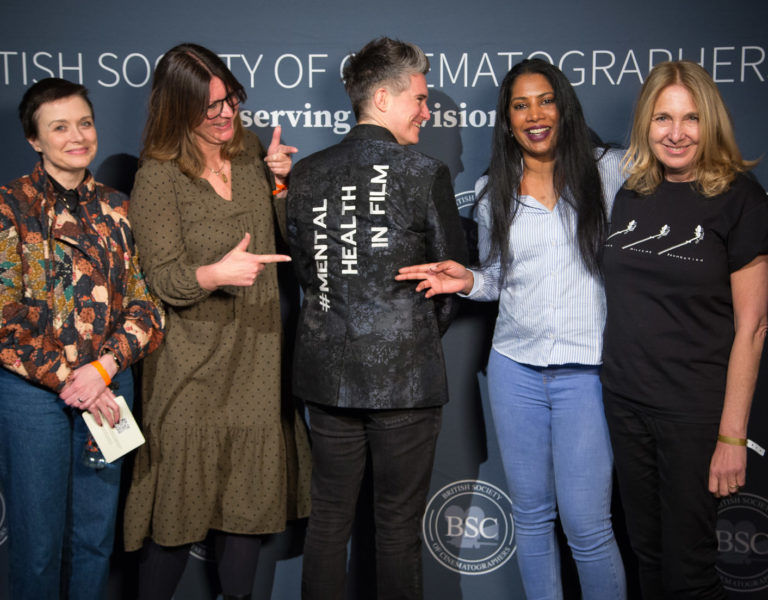Randy Rainbow took to the stage the first night of the two-part Creative Arts Emmy weekend, there in a sparkling tuxedo, and sang – to the tune of It Had To Be You, a song you probably last heard when you rewatched Casablanca – the words “It Had to Be Crew.”
He paused during the lyrical paeans to all the below-the-liners getting awards that weekend to note, “I didn’t write it,” but also added that “that public domain tune makes everything cheaper.”
A short while later, he came backstage, for indeed, the Creative Arts Emmys, being a bit looser than their Oscar counterpart, also makes presenters available for backstage Q&A.
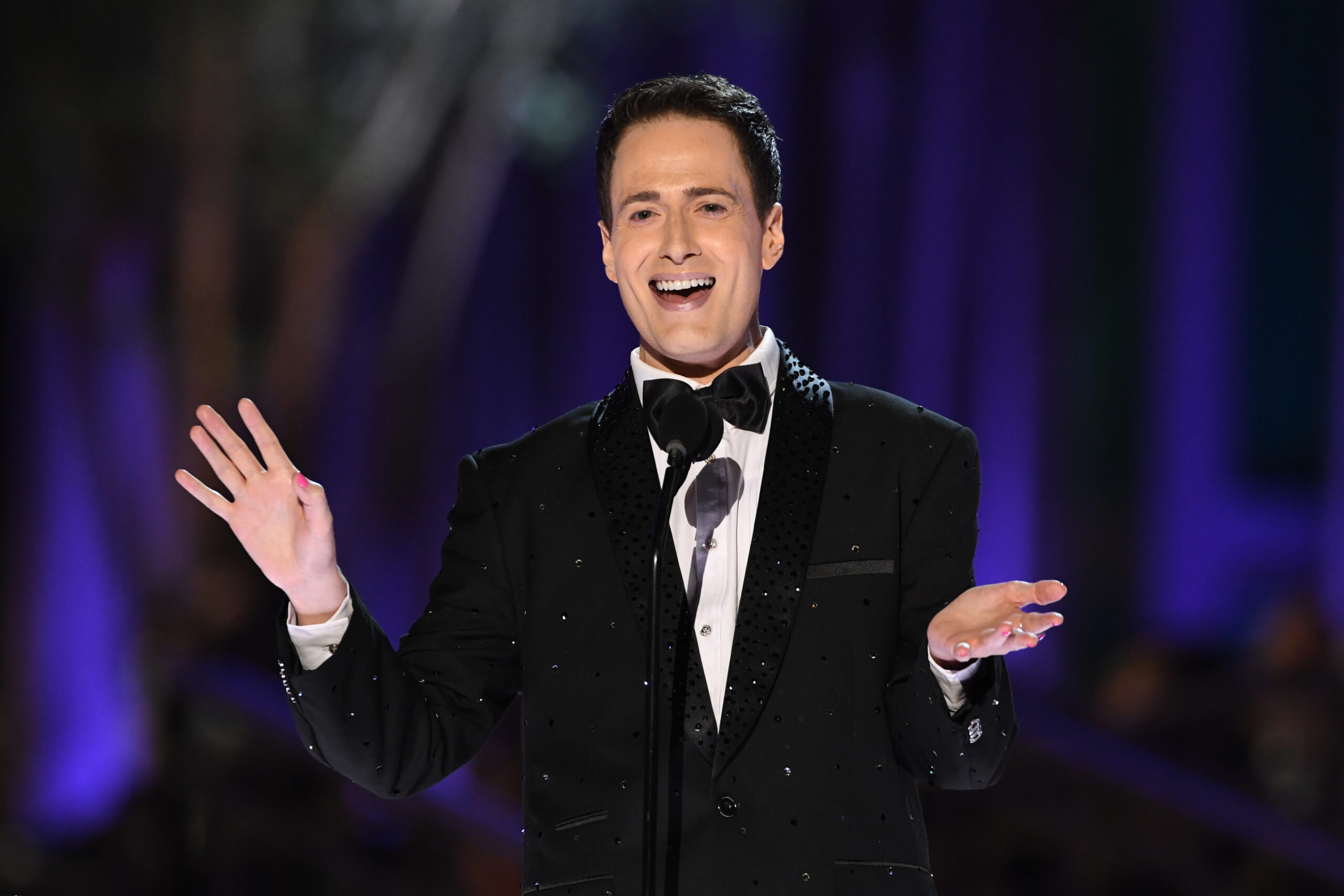
Given his rise to fame via YouTube, converting alarming headlines into Broadway-set showtunes, he mentioned the current dystopia has left him “no shortage of material for the last six years,” and gets an idea for a new song “every time I tune into the news. Despite the horrific and infuriating events that inspire these videos (they’re) really a coping mechanism. It’s a terrible time for our country – but great for my career.”
That acerbic observation was somewhat in contrast to the ebullience displayed by Edward James Olmos, one of the second night’s hosts (for indeed, there are so many categories – multiple ones in cinematography alone! – that the Creative Arts awards take up two separate evenings), who opened by saying that “no one works as hard as the creative artists do. No actor I’ve ever seen. You arrive before us and leave after us… and make us what we are, so we can stand there and tell the story.”
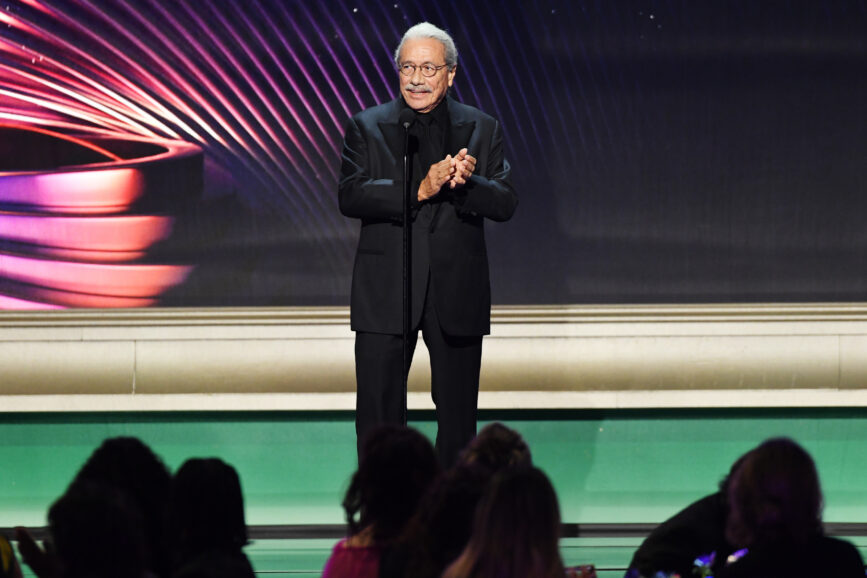
Those countervailing energies sum up much of the present moment in showbiz (and the larger world in which it exists), with its record box office hauls as theatre chains declare bankruptcy, and its celebrations of a new TV golden age, as streaming services lose subscribers, and join studios in layoffs.
But it was the celebratory mostly in evidence over the weekend.
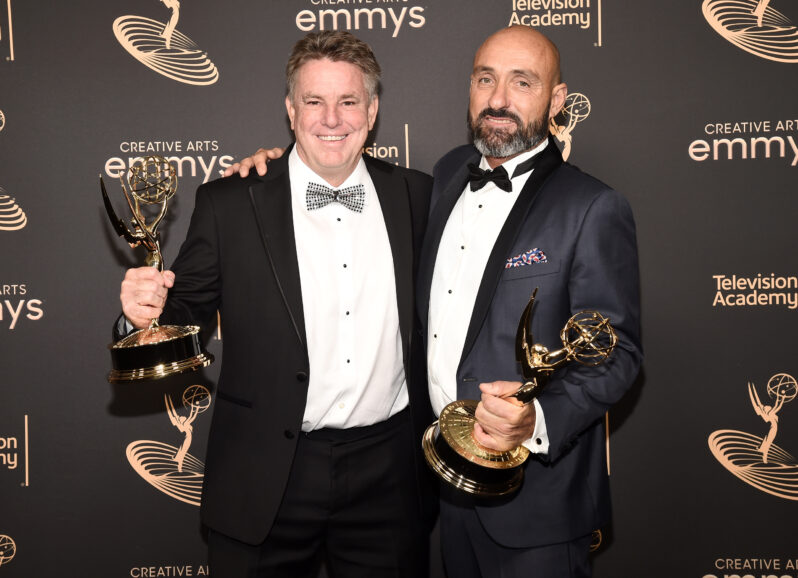
Our previous column, posted as we were actually at Creative Arts weekend, contained an interview excerpt with Mike Prickett, who won his first-ever Emmy, along with Laurent Pujol, for their engaging, immersive work on HBOs surfing opus 100 Foot Wave.
Prickett, who as previously noted, walks with crutches after having heroically rescued a diver during a shoot some years back, and getting bubbles in his spine as he shot to the surface with no oxygen left, was rather touchingly held up by Pujol, as they took questions backstage. They recounted how Prickett would oversee the shooting – both in Nazaré, Portugal, whose undersea canyons produced the titular, obsession-sparking waves, and in other spots around the world – with Laurent in the water, on a Jet Ski, where, he said he kept in contact with “a spotter on the cliff, letting us know where to go.”
And into the waves they went – not only with RED cameras – but the gear they’d invented, such as remote-control cameras on those Jet Skis, “controlled from the beach,” which, Prickett noted, “had never been done before.”
Laurent said he would “just go out and hope for the best,” and in this case, many good things indeed happened, though there were also scenes of world-class surfers knocked out by those monster waves.
Ahead of them, the similarly elemental-themed Life Below Zero won Saturday’s other cinematography award, in the Reality Programming category, with Danny Day (who won along with Michael Cheeseman and Simeon Houtman) thanking “the other nominees in this category. You guys paved the way for me to stand here today.”
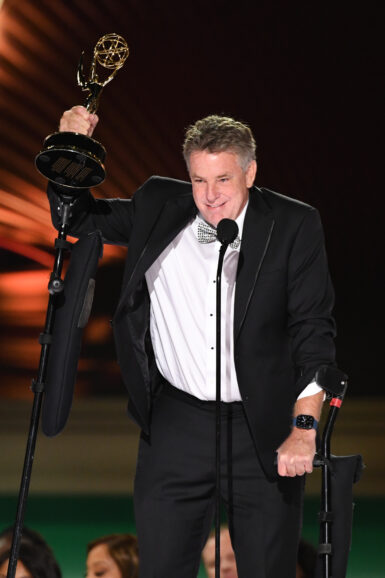
Later, in the interview room, Day talked about “terabytes and terabytes of footage,” mostly captured with Canon lenses on Sony cameras – for “twelve minutes of TV.” But he added, the whole reason “you go into documentarian-style shooting,” is to get those dozen minutes – or that one spectacular wave – since “capturing those moments…is what the essence of our show is. It’s all about moments.”
The following evening, the winner for single-camera one hour series cinematography was Marcell Rév, who won for Euphoria. He talked about not only about the particular moments in his winning episode, the Antonin Artaud-riffing The Theater and Its Double, but his shorthand with series producer/director Sam Levinson, such as coming up with ideas for discussed scenes “even before (Levinson) writes something.”
Along with a particular commitment to shooting on film.
“We shot different film stocks,” Rév says of Euphoria’s recent season, “and while the aesthetic seems to be contemporary, we have a very classical approach to it, using very simple old school tools – a lot of tungsten lights, dollies (along with Arricam LTs, Cooke S4s and Zeiss Super Speed glass). “In my opinion,” he added, “film is the best to capture a person’s face.”
Film, or at least, “movies,” are also affecting how visuals that were once strictly “television,” are now approached, at least according to Gary Baum ASC, who won his third Emmy in the multi-camera series category, this time for How I Met Your Father.

“Everyone wants to make multi-camera more cinematic and more visually exciting than it was 25 years ago,” he said, in response to our question on that very topic. “We use four cameras,” and while there were, by definition, “a lot of multi-camera” setups on the show, there were also, he said, “a lot of single camera” shots as well.
“You have to keep up with technology, lighting,” he continued. “That’s basically the challenge.” Though he acknowledged other productive challenges from the series, as well. “We’re working on a lot of different sets, working outside – the show stretches everyone’s visual sense.”
Winning on the single-camera half hour side was Christian Sprenger, for Atlanta. The episode he won for, Three Slaps, was special because “it was the first episode back after a four-year hiatus,” and the original cast wasn’t even in it. And while most of the series is shot on an Alexa LF, this one, with its “Farmers’ Market” settings, used rehoused ZeroOptik Olympic lenses for its particular look.
“We try to make it (visually) unique each season,” Sprenger said in the media room. “We want to maintain our aesthetic for the show (while continually) advancing lighting techniques.”
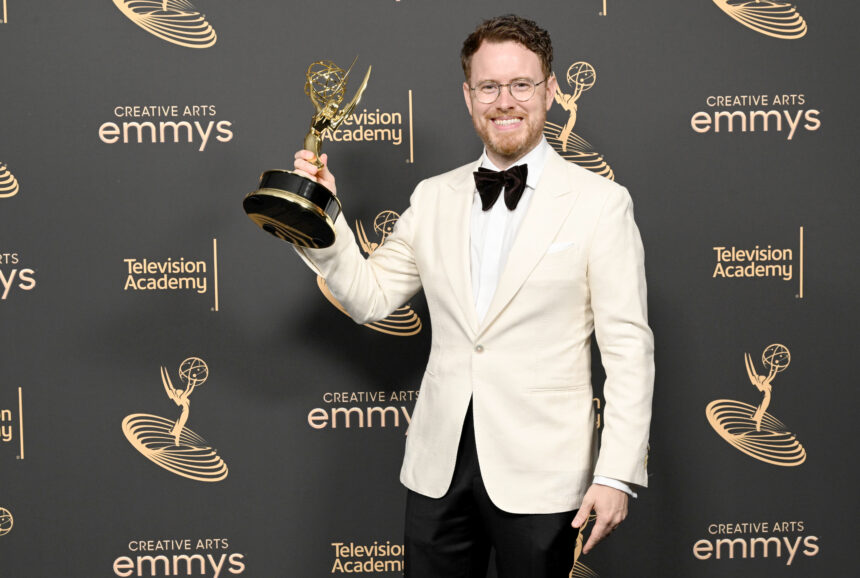
Checco Varese ASC won in the limited series/movie category for his work on Dopesick, however, with an approach to visuals that reverted to the aesthetics of his news footage days.
Backstage, he mentioned that the series, about the fomenting and spreading of America’s opioid addiction, particularly in the form of Purdue Pharma’s OxyContin, “was a big challenge. (The structure) was a lot of people talking,” but then the show’s directors, which included Barry Levinson and Patricia Riggen, “made my job extraordinarily easy,” with their work on shot lists, along with a cast that included Michael Keaton in his own Emmy-winning role as Dr. Samuel Finnix, delivering “great performances in a subject matter that is important for all.”
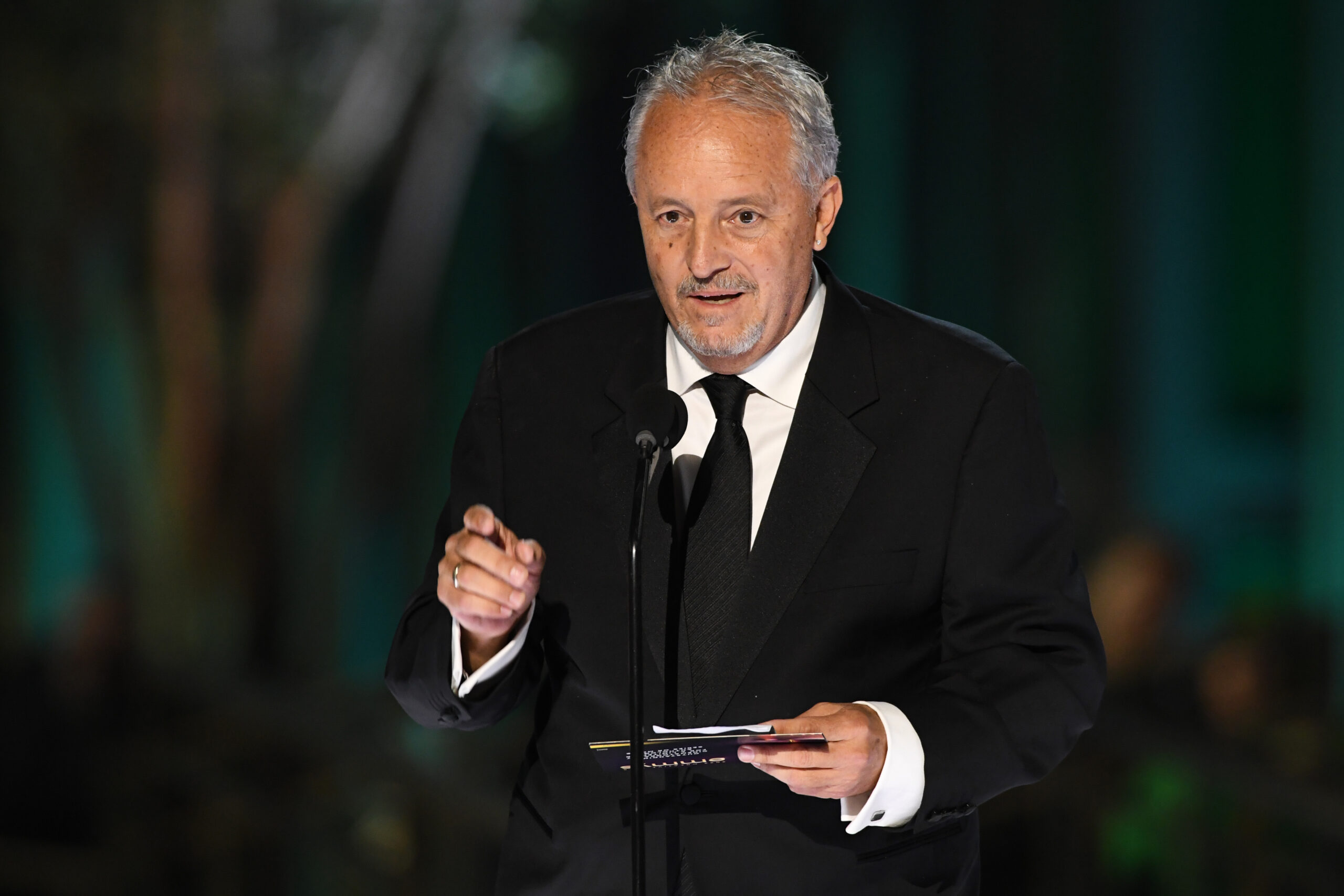
In an earlier interview with Sony, on their SonyCine website, Varese had mentioned wanting to get out of the way of those performances as much as possible. “‘(Showrunner and director) Danny Strong wanted to keep it as real as possible, and my challenge was not to overdo the pain and suffering.’ He explained that exposing the characters who become addicted needed to be relatable to the audience: ‘They trust the system and their doctors. I wanted to show the desperation, similar to what I did in the ‘80s working in news and documentary.’”
For that look, he used a Sony VENICE. And in a follow up email after the awards, told us that the combination of camera, along with Zeiss Prime lenses “gave me a shallow depth of field if I wanted it, and a gentle and almost transparent look, not fabricated. I also had the ability to go from a day exterior to a dark exterior just by changing a few settings. The Zeiss lenses and Sony sensor together work in synergy to achieve that,” while reiterating that “for this show, I wanted the audience to become engaged in the characters, not the artistry of the show.”
But of course it was the artistry that was ultimately rewarded over the weekend. That particular creative tension – doing your best work to allow an audience to enter a story with as few impediments as possible – was on display throughout.
It was there with the sprawling, winning VFX team for The Book of Boba Fett – many of whom were on last year’s also-winning team for The Mandalorian. When we asked about how use of LED volumes is changing visual effects work, they reiterated that in finest Star Wars tradition, they still use models, and miniatures too, “techniques used by the giants whose shoulders we stand on.” Which makes sense for teams that include “legacy effects supervisors” as well.
Perhaps that sense of gratitude, for the work of predecessors and colleagues, was enhanced given the aforementioned contradictions afoot right now, as well as this being the second “pandemic era” gathering for the ceremony, still with Covid test required, but with fewer masks in evidence.

Those very contradictions were nicely encapsulated by John M. Valerio, who won for picture editing (as opposed to sound editing and mixing– and other documentary categories – dominated by The Beatles: Get Back) for White Lotus, in the “Limited or Anthology Series or Movie,” category, where White Lotus itself would prevail, even eclipsing Dopesick, a week later in the primetime awards.
White Lotus of course, being a show that is, in part, about being oblivious to one’s privilege.
Given that it was famously shot in a quarantine bubble at a Hawaiian resort otherwise empty during the pandemic, we asked Valerio if he was inside or outside that bubble, while working with (also Emmy-winning) creator/writer/director Mike White, and the answer turned out to be – both!
Initially at “home cutting remotely (having) a lot of email conversations,” with White, he later “had the great fortune of moving to Kuai,” where White also has a home. Indeed, “the entire post-production team moved.”
There, he worked “face-to-face with Mike,” though remotely with everyone else, including the colour timers, etc. He was even able to bring his family and found himself in “some kind of resort condo complex – (with) the sweetest editing setup I ever had.”
“Being there during the pandemic – we experienced the island like no one ever has. I feel like it was such a trying time for so many – (yet) it was one of the best times I’ve had in my life.”
Whether those best of times are juxtaposed against a Dickensian “worst of times” depends on a lot of variables in one’s own journey, along with a big helping of luck, but the gratitude was certainly in evidence throughout Creative Arts weekend.
Here’s hoping that luck, such as it’s been, keeps holding.
Meanwhile, see you further into autumn.
@TricksterInk / AcrossthePondBC@gmail.com
